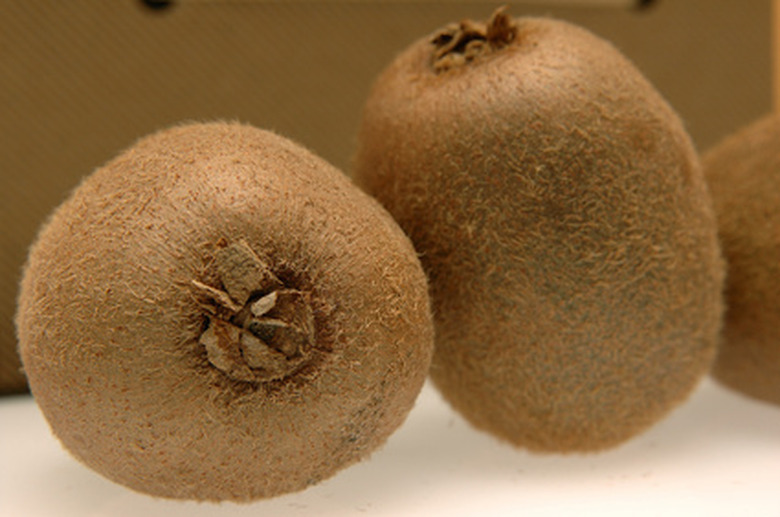How To Clean Kiwi Fruit
Full of beneficial enzymes, omega-3 fatty acids and about 100 milligrams of vitamin C per fruit, the kiwi has built a reputation as powerful health agent. However, many kiwis bought from fruit suppliers can be laden with bacteria and germs that can cause illnesses. As with any fruit or vegetable that is about to be consumed, proper washing is required.
Step 1
Open the package of kiwis, and gently place them in an empty, clean kitchen sink.
Step 2
Put on your gloves and inspect the batch of kiwis. Discard any decaying fruit, or fruit showing obvious signs of deterioration. Rotting fruit can potentially carry yeast and bacteria that can cause illness.
- Full of beneficial enzymes, omega-3 fatty acids and about 100 milligrams of vitamin C per fruit, the kiwi has built a reputation as powerful health agent.
- However, many kiwis bought from fruit suppliers can be laden with bacteria and germs that can cause illnesses.
Step 3
The National Center for Biotechnology Information recommends cleansing the fruit with lukewarm tap water with a second washing being highly beneficial in removing most pathogens on the surface of the kiwi. Gently rinse the fruit with water from the tap, allowing the chlorine in the water to kill bacteria on the kiwi. A gentle brushing with a fruit brush will help remove physical contaminants like soil, debris or insects.
Immature Fruit On Kiwi Plants From Falling Off
Water kiwi plants regularly with 1 inch of water to keep their soil moist so their shallow roots do not dry out. During the plants' active growth, you may need to water them one to three times each day, especially during hot, dry weather. Use a drip-irrigation system or soaker hose to provide water if possible. The mulch helps to prevent kiwi plants from becoming water-stressed. Grow one male kiwi plant for every eight or fewer female kiwi plants, selecting varieties that bloom at the same time. Ideally, grow kiwi from the same species.
- The National Center for Biotechnology Information recommends cleansing the fruit with lukewarm tap water with a second washing being highly beneficial in removing most pathogens on the surface of the kiwi.
Things Needed
- Plastic gloves
- Fruit brush
Tip
If you are particularly worried about bacteria and germs, then the National Center for Biotechnology Information recommends peeling kiwis before consuming them. Most bacteria can't penetrate the outer layer of unbroken skin.
References
- National Center for Biotechnology Information: Bacteria on Fruit
- NC State University: Kiwifruit
- Drugs.com: Kiwi Fruit
- Pacific Northwest Extension: Growing Kiwifruit
- University of Georgia College of Agricultural and Environmental Sciences: Minor Fruits and Nuts in Georgia
- PlantAnswers.com: Fruit Bloom Drop and Fruit and Nut Care
- GardenWorks: Growing Kiwifruit Fruit Facts
- California Rare Fruit Growers Inc.: Kiwifruit
- North American Pollinator Protection Campaign and Pollinator Partnership: Selecting Plants for Pollinators
- National Gardening Association: Edible Landscaping with Charlie Nardozzi — Edible of the Month: Kiwi
- Raintree Nursery: Kiwi
